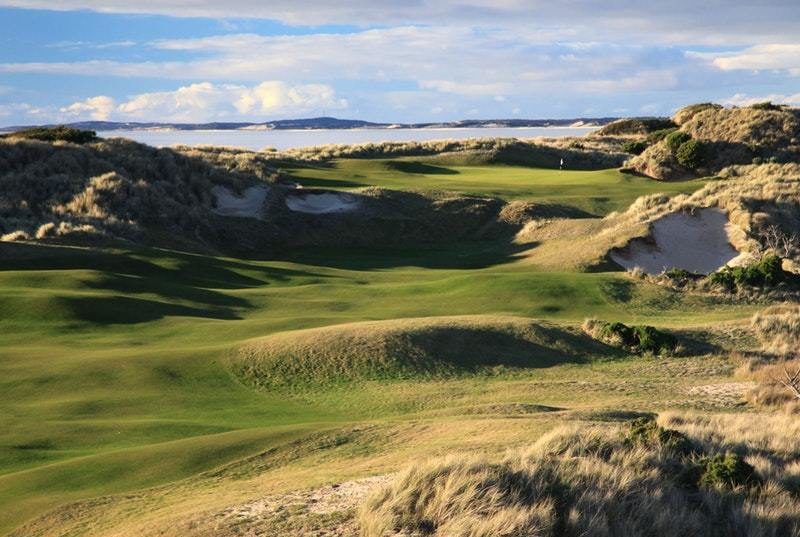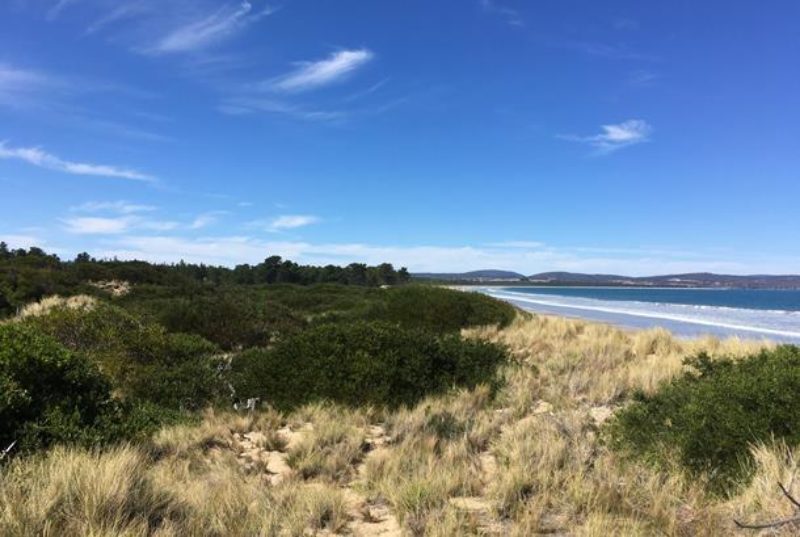Golf in Tasmania
Golf in Tasmania was first recorded to have been played (and thus likely to have been enjoyed many years prior) in the 1850s. Scottish immigrants (read: convicts provided allocated land) introduced the game via holes formed on farmland. Thus, the game in this part of the world was enjoyed long before to its introduction to the United States.
- A note on Tasmania for those who have not had the pleasure to visit: "Tassie" is the island directly south of mainland Australia. A short flight from Melbourne will have you feeling like you stepped back in time to a more quiet and less hectic place. Much of the State is National Park, but it has two small cities and hamlets that dot the landscape. More on its largest city, Hobart is below. It's perhaps most similar to the South Island of New Zealand than anywhere else in the world and the kind of place where if you don't wave when you pass a car in the other lane... there is something very wrong with you. You wave and you smile. That's the rule. No reason to rush. Wave when you drive.
2004 was the introduction of the first top golf course design in Tasmania with the introduction of Barnbougle's Lost Dunes. Following the success of Bandon Dunes in Oregon (1999) a Tasmanian farmer was approached with the proposition to turn inefficient farmland into a golf course. Similar to the first courses on the island Barnbougle was designed from farmland! Similar to Bandon Dunes it is not in a very accessible place on this planet. The land dictates the build.
Tom Doak was the lead architect of both Bandon Dunes and Barnbougle. In Australia he team with Michael Clayton. They had worked together previously in Australia at St. Andrews Beach. Lost Dunes was further followed in 2010 by Coore-Crenshaw with introduction of Lost Farm. Suddenly Tasmania had two top courses in the world thanks to great vision, great land, design and execution.
Certainly the building of these world-class golf courses did not go unnoticed by Hobart-native and professional golfer Mathew Goggin.

The Vision to Further Golf In Tassie at Seven Mile Beach
2011 must have been a busy one for Goggin, as he was actively playing professionally on the Web.com tour and had two wins that year alone. This didn't stop him from establishing The Golf Preserve shortly after Lost Farm's 2010 completion. As its Director, Goggin and The Golf Preserve intended to compliment Barnbougle with a golf course in the southern part of Tasmania. More specifically, Goggin targeted the Seven Mile Beach peninsula located just outside of his home town. It was land he had eyed for years, and continuously wondered why nobody had built a golf course on it.
- A note on Hobart for those who have not visited: It's the capital city of Tasmania in the way that Aspen, Savannah or Portland, ME are a city. Located at the most southern end of Tasmania (so opposite of where Barnbougle is located) please envision a very walkable, quaint, safe and comfortable town. There are square parks in which people relax. Boutique hotels and buildings made of stone drunkenly lean on each other. And while it has its modern comforts, museums and a foodie/drink scene... the whole place seems very connected to both sea and farm. It's not the place one will find too many late-night parties as most will be up early to hike and be outdoors. Things are fresh in Hobart- the air, the seafood and the drinks.
In 2014 the Goggin/Clayton duo submitted their vision for the course and complex at Seven Mile Beach. And while The Golf Preserve did eventually secure permits, it was not without pushback from the locals. Plans were originally rejected by local council opposed to rezoning the land. How far the original design by Ogilvy Clayton Cocking & Mead (Clayton’s firm until 2019) progressed are foggy. The master design was to incorporate a 5-hole course for kids and real estate project not appreciated by horse-back riders who also enjoyed the peninsula. In addition, the Hobart airport feared that housing developments could curtail flights due to noise restrictions.

The Establishment of Cape Wickham Stokes the Fire
Even with the setbacks by the local Tasmanian council, one can not help but wonder how the establishment of Cape Wickham in 2015 played into the Seven Mile Beach story. Located on the very remote King Island, Cape Wickham was designed by the little-known American Mike Devries. He produced an incredible course. Clayton recognized its specialness immediately, but due to King Island being so remote, Cape Wickham failed to gain the attention it deserved on the world stage. Even so, its success and the fact that it became a reality certainly must have spurred Goggin to continue to push for a similar accomplishment in a less remote locale.
Success in the Pandemic
In 2019 and 2020 things seem to have come full circle for the course at Seven Mile Beach. In 2019 Clayton formed a new firm (CDP Golf) with Mike DeVries and Frank Pont (Netherlands) and The Golf Preserve was able to successfully acquire a lease for the land in 2020. While the initial plan included real estate and surrounding builds as part of the project, the winning submission is now focused on pure golf. Like Bandon dunes and Barnbougle, Seven Mile Beach will be publicly accessible. Unlike them however, it will also be located where people can easily access it- a few minutes from Hobart and the airport.
Those who have been to this part of the world will understand that this is the only place in Australia which allows the growth of fescue. The course will be built on a sandy base for excellent drainage- like all great links courses. We couldn't be more happy to understand the site will be prepared in the first part of 2021, with construction to begin by the end of the year.
What Will the Future hold?
Barnbougle and Bandon Dunes are special because they provide great golf but also a number of challenges. With the recent introduction of Sheep Ranch, Bandon Dunes has six 18-hole courses in addition to the Punchbowl and practice facilities. Barnbougle in 2020 began to expand its own offerings via a short course. We mention this because the space at Seven Mile Beach will allow for additional golf. Here's to hoping the project is a success, because additional golf on the Five Mile Beach side of the peninsula could only be good for Australia's golf offerings.
